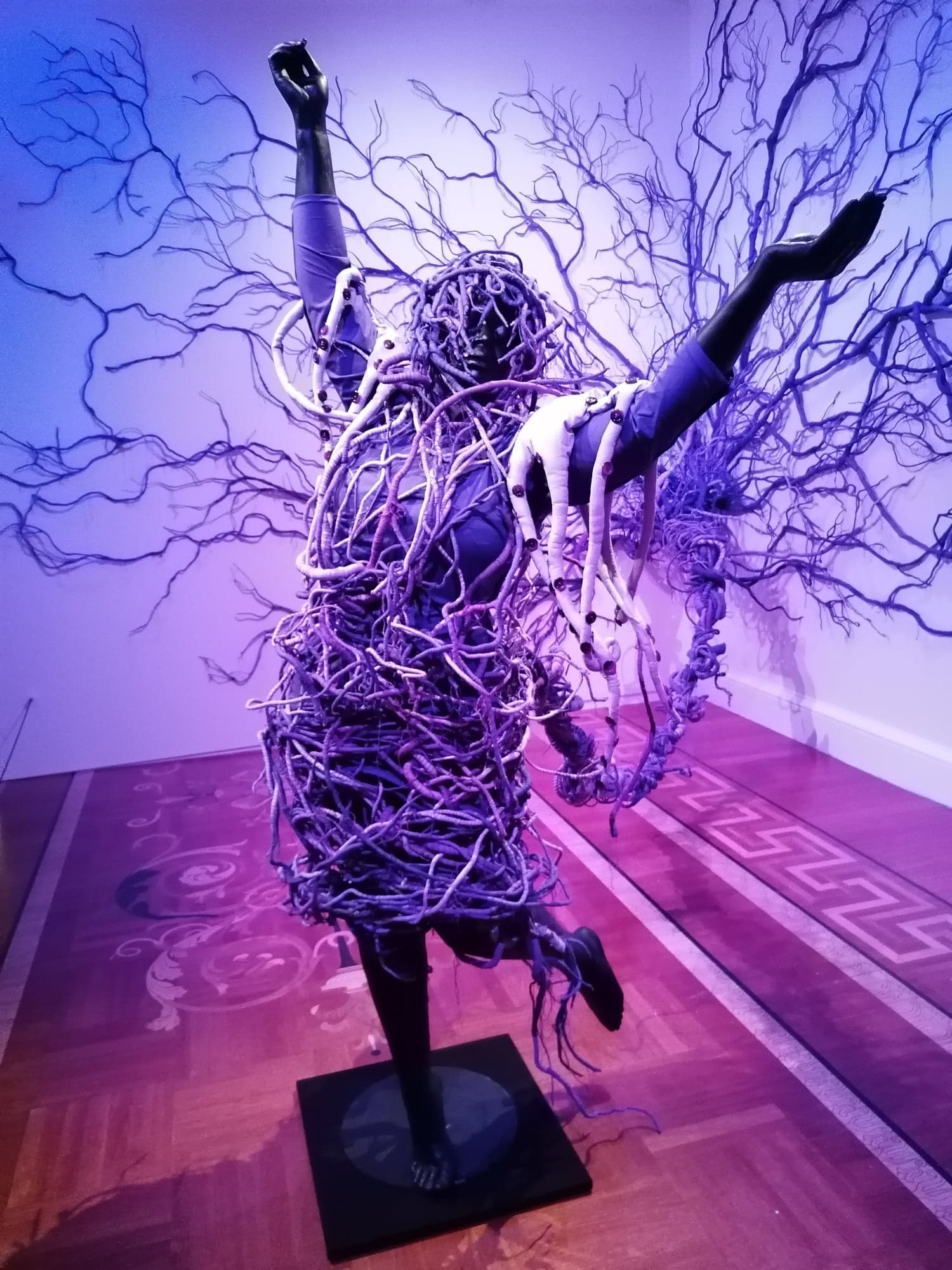By Indigo Lilburn-Quick, BA History and Politics
The sprawling labyrinth of Somerset House set the scene for the confusing and piecemeal show: the 1-54 Contemporary African Art Fair. Spread over several floors and across the East, West and South wings of the imposing 18th-century gallery, the exhibition was certainly vast. The work of more than 150 artists from Africa and its diaspora was presented in 45 international galleries, providing something for everyone to enjoy. Although the variety was exciting, it left much to be desired in the way of curation. As each gallery was in charge of presenting their selection of work as they saw fit, the whole show was incongruent and disorientating. Due to the layout of the building, there were few large spaces that could really do justice to the pieces on display. This disappointment was somewhat mitigated by the overall high quality of the art – the vibrant variety of work aptly showcased the talent of an oft-forgotten continent within the art world.
“Although African artists are starting to get their foot in the door, when it comes to recognition it is still a white hand that decides whether to open that door or not.”
There were two parts of the fair that were presented as small stand-alone exhibits amongst the higgledy-piggledy gallery presentations: Mary Sibande’s I Came Apart at the Seams and Aïda Muluneh’s Water Life. Sibande is a South African artist who works from Johannesburg. Her sculpture and photography address South Africa’s recent history and the legacy of apartheid when it comes to modern race relations. Sibande is her own muse and her artistic avatar, Sophie, is present in her work as a way to represent women of different classes and backgrounds. Her sculptures were extremely powerful testaments to the lasting effects of racial oppression and the importance of human dignity. Sibande’s work was the clear standout of the entire fair. Muluneh’s Water Life was a mesmerising collection of photographs that document the reality of water scarcity across many parts of Africa. The female protagonist featured in these dramatic images suggests the gendered nature of the issue and also, perhaps a gendered solution. The display, with its combination of modern and ancient imagery, left a fascinating impression on the viewer and hinted at an alternative reading of contemporary Africa and the way forward when it comes to tackling these issues.

Water Life by Muluneh provides striking images to illustrate the realities of water scarcity (Credits: Indigo Lilburn-Quick)
Aside from the excellent presentations of Sibande and Muluneh, there was something missing from most of the galleries’ spaces: people of colour. The vast majority of gallery owners, curators and collectors were white. Although African artists are starting to get their foot in the door, when it comes to recognition it is still a white hand that decides whether to open that door or not. Furthermore, the £25 fare (£10 for students) reinforced the idea that art is only for the rich: a problematic ideal, to say the least.
Overall, I enjoyed the fair – it provided a variety and volume of work that is unrivalled when it comes to displays of African art in London. However, there is still a long way to go when it comes to representation in the art world overall, and perhaps a commercial art fair is not the best place to look for it.
